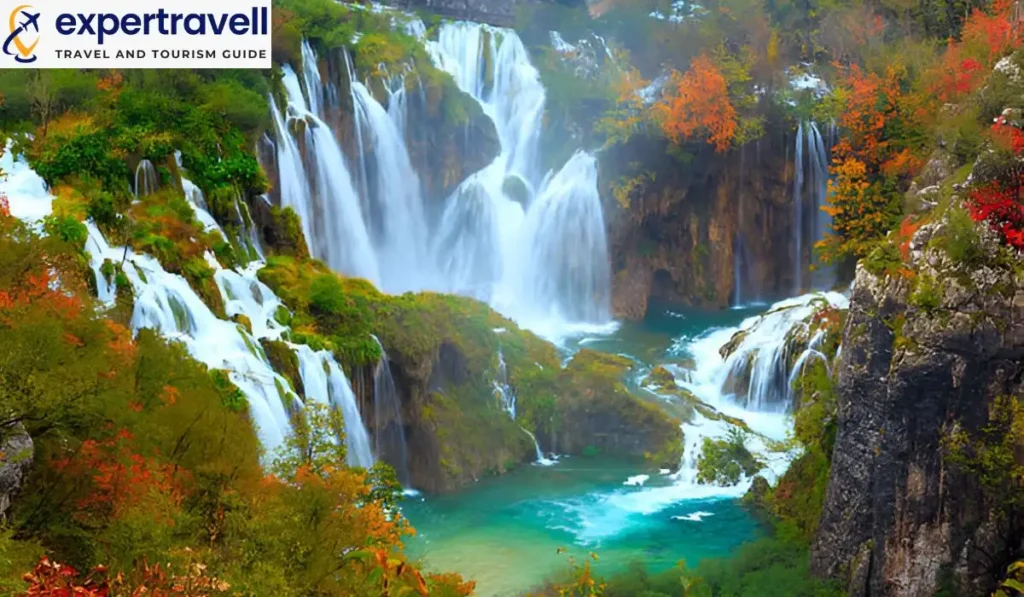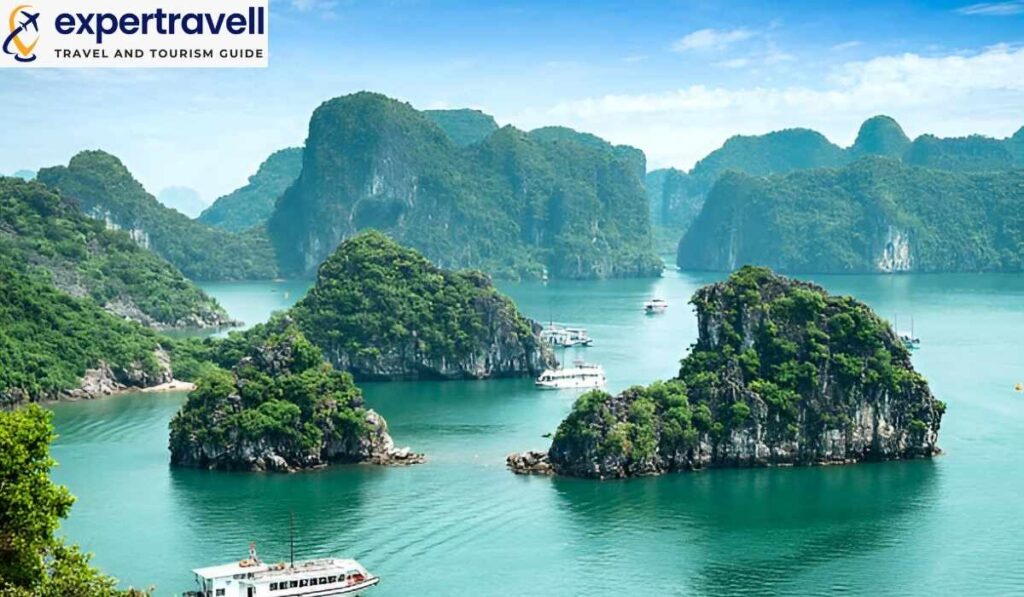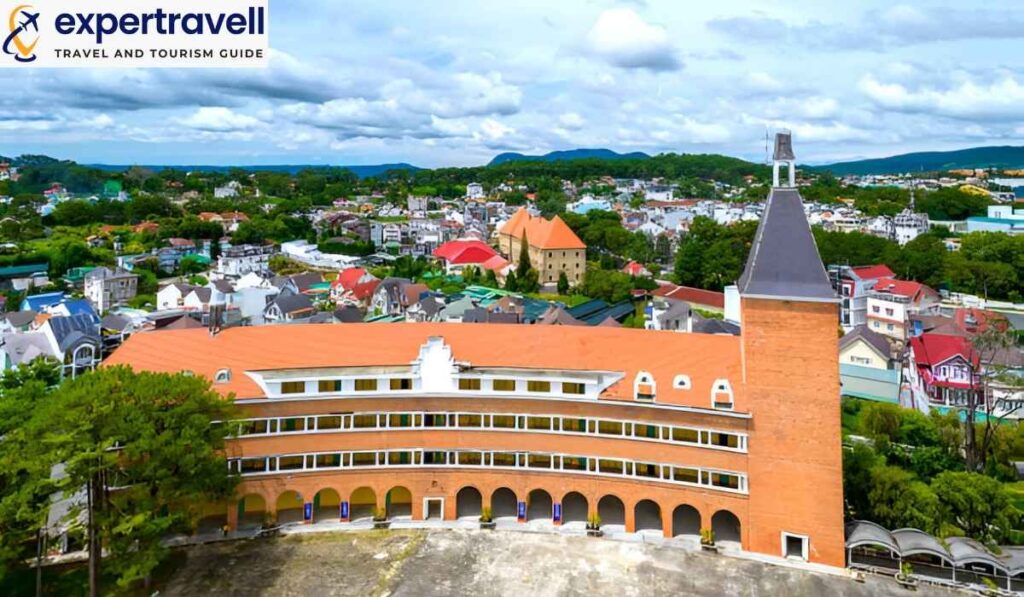Plitvice Lakes National Park is a true gem nestled in Croatia’s lush landscape. Renowned for its striking chain of terraced lakes, waterfalls, and vibrant ecosystems, this park captivates nature lovers and adventure seekers alike. As one of the best natural attractions in Europe, Plitvice Lakes is more than just a scenic escape it is a testament to nature’s ability to craft breathtaking wonders.
Visiting this UNESCO World Heritage site isn’t merely a vacation but an experience rich in beauty and history. If you’re curating a list of must-visit European destinations, this park deserves top billing, much like Zion National Park for its unparalleled natural allure.
The History and Significance of Plitvice Lakes
The story of Plitvice Lakes dates back thousands of years. It gained its UNESCO World Heritage status in 1979, cementing its place among the world’s most revered sites. The park is deeply intertwined with Croatian culture, symbolizing a national treasure that draws travelers from across the globe.
Plitvice Lakes’ history reflects the harmonious relationship between water and limestone, creating a dynamic landscape that continues to evolve. For anyone intrigued by the cultural importance of Plitvice Lakes, it’s fascinating to note its role in bolstering Croatia’s tourism and the pride it instills in its people.
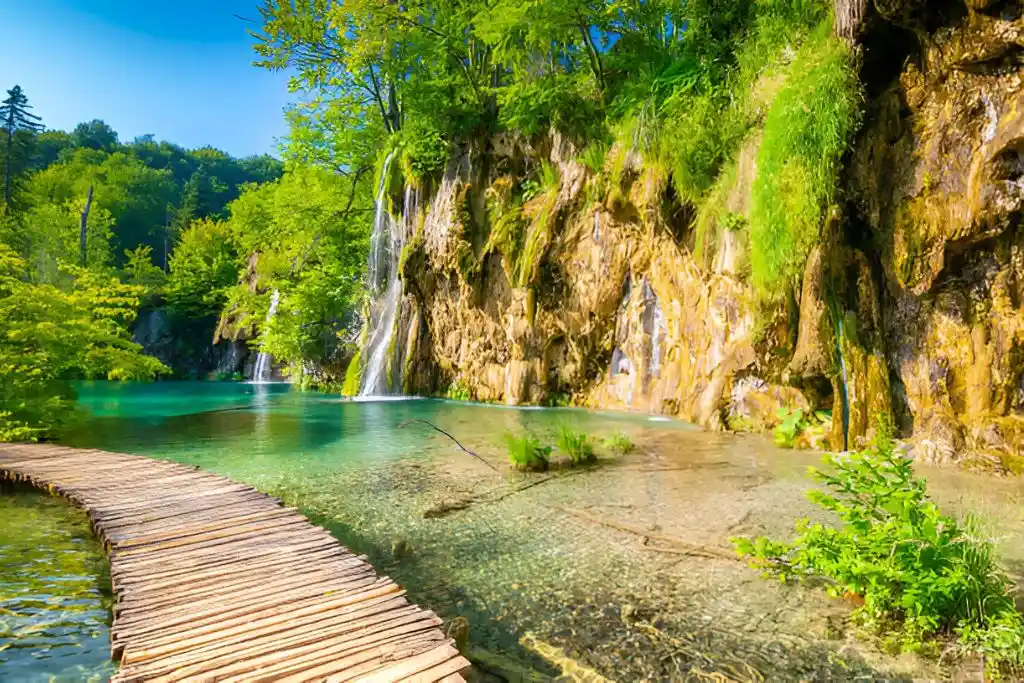
Why Plitvice Lakes Should Be on Your Bucket List
What sets Plitvice Lakes apart from other European parks is its unique features. Picture cascading lakes interconnected by a network of waterfalls, surrounded by lush, forested hills. The clear waters shift in hue from azure to emerald, revealing a mesmerizing spectrum that seems almost surreal. This park epitomizes stunning landscapes in Croatia, boasting diverse flora and fauna.
For travelers seeking a destination that combines serenity and grandeur, Plitvice Lakes embodies an unparalleled blend of both. It’s no wonder this breathtaking park is often considered one of the best places to travel for beginners, showcasing Croatia’s natural wonders at their finest.
Best Time to Visit Plitvice Lakes
The seasons at Plitvice Lakes each offer distinct experiences. Spring brings blooming flowers and rushing waterfalls, making it ideal for those wanting to see nature’s full display. Summer boasts warm weather at Plitvice Lakes, perfect for extensive exploration, though it can be crowded. Fall introduces a palette of warm colors, wrapping the park in shades of gold and crimson.
Meanwhile, winter cloaks Plitvice Lakes in a serene, snow-dusted charm, offering a peaceful and less-traveled path. Understanding the best months to visit Plitvice is key to planning, as each season has its own advantages and drawbacks.
How to Get to Plitvice Lakes
By Car
Driving to Plitvice Lakes offers flexibility and convenience. The park is about 2 hours from Zagreb and Zadar. From Split, the drive takes around 3 hours. Main roads are well-maintained, making the journey comfortable. Parking is available near park entrances. It’s wise to arrive early, especially in peak season, as lots can fill up quickly.
Renting a car is a good option for those wanting to explore nearby areas. Many agencies offer rentals in major Croatian cities.
Public Transportation
Buses are a cost-effective way to reach Plitvice Lakes. Regular services run from major Croatian cities. Travel times vary:
- From Zagreb: 2 hours 20 minutes
- From Zadar: 2 hours
- From Split: 3.5 – 5.5 hours
Buses typically drop passengers near park entrances. It’s crucial to check schedules in advance, as frequencies may decrease outside peak season. Some visitors combine bus travel with overnight stays near the park for a more relaxed experience.
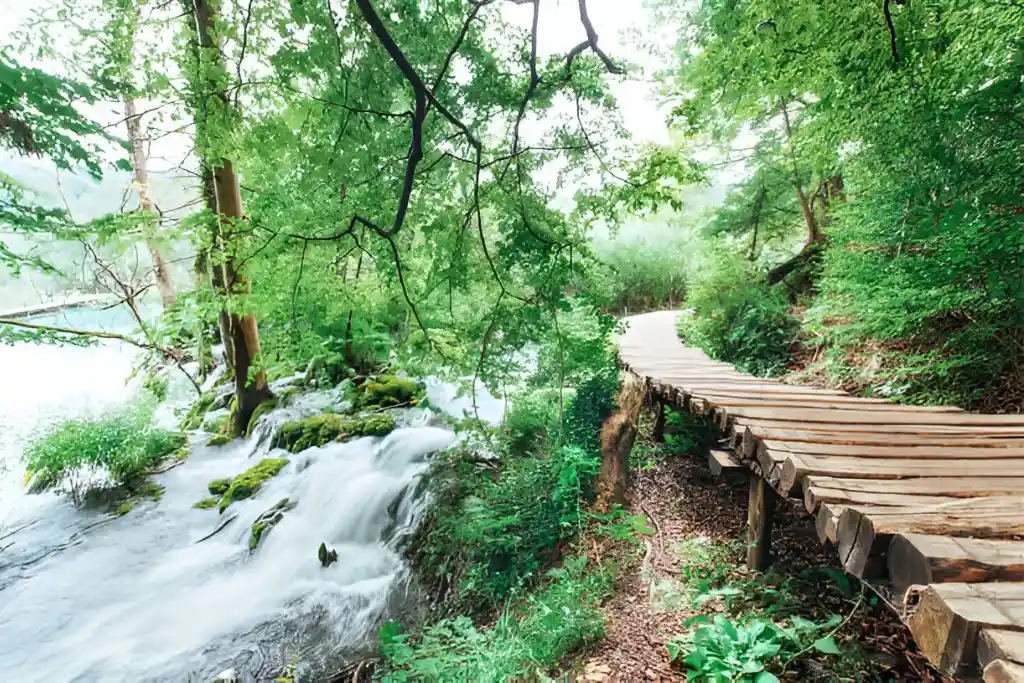
Guided Tours
Organized tours provide a hassle-free way to visit Plitvice Lakes. Many companies offer day trips from major cities like Zagreb, Zadar, and Split.
Tours usually include:
- Round-trip transportation
- Park entrance fees
- Guide services
- Set itineraries covering key attractions
This option is ideal for those short on time or preferring structured visits. Tours often provide insights into the park’s history and ecology. Group sizes and tour durations vary. It’s advisable to book in advance, especially during busy summer months.
Exploring the Main Trails and Routes
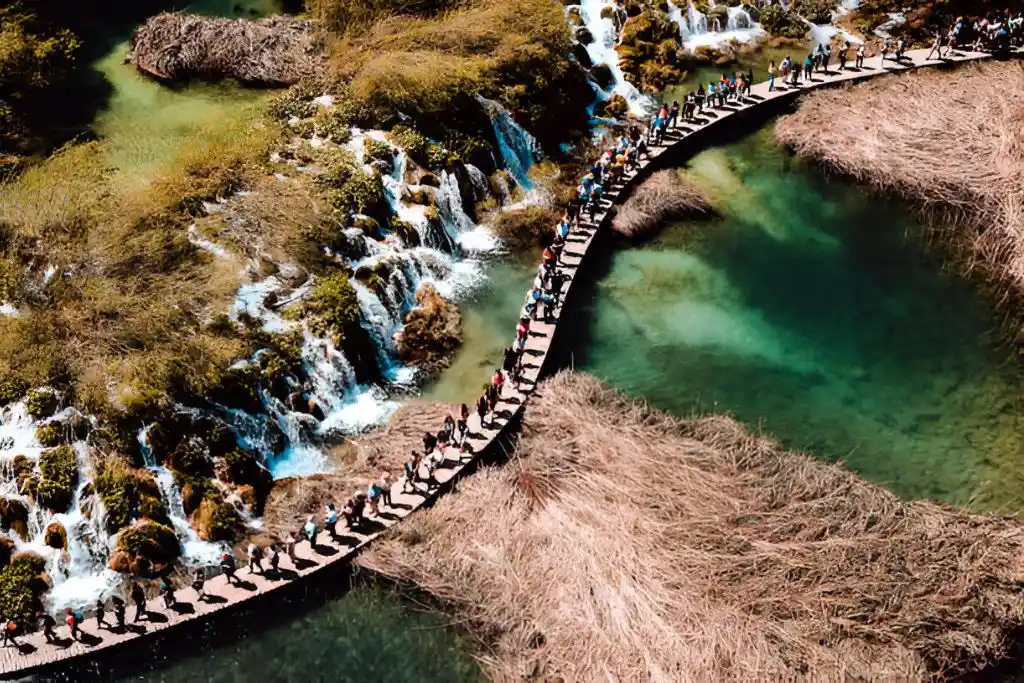
Walking Trails
Plitvice Lakes National Park has four main trails and seven routes, ranging from easy walks to more challenging hikes. The shortest route takes 2-3 hours, while the longest can take 6-8 hours, catering to different fitness levels and schedules.
Wooden boardwalks provide close-up views of waterfalls and lakes, with safe, well-maintained paths. Trails showcase both upper and lower lakes, revealing diverse landscapes and wildlife like birds and fish.
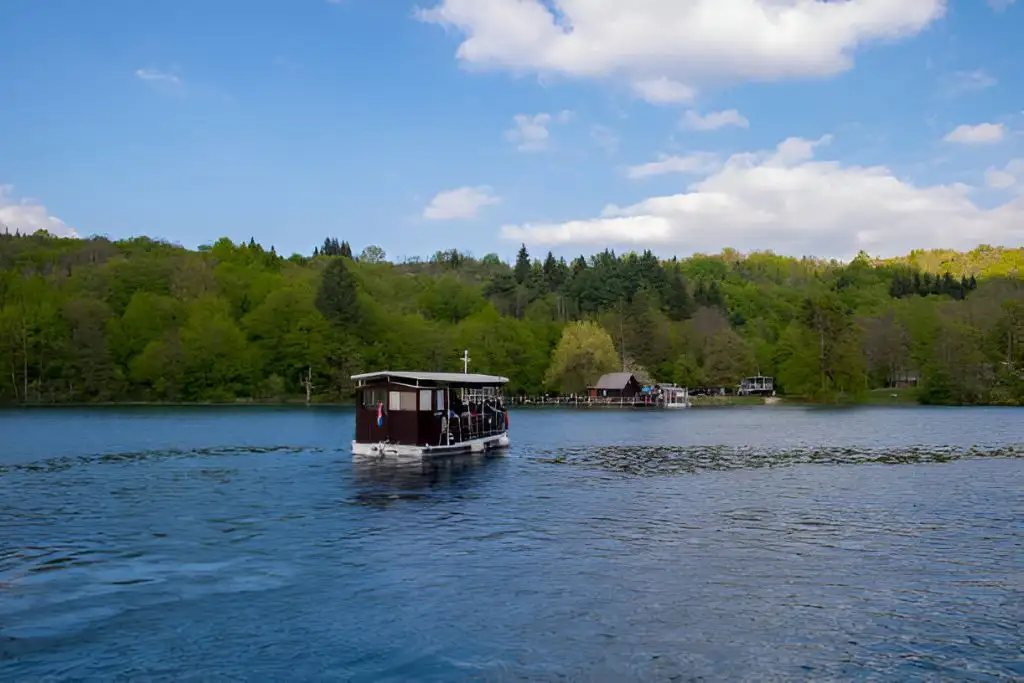
Boat Tours
Boat tours offer a unique way to experience Plitvice Lakes, with electric boats crossing Lake Kozjak, the largest lake. These eco-friendly boats ensure a peaceful ride, taking around 20 minutes and included in the park fee.
Guests can admire forests and waterfalls from the water. Life jackets are provided, and the boats are wheelchair accessible, making it a safe and inclusive activity.
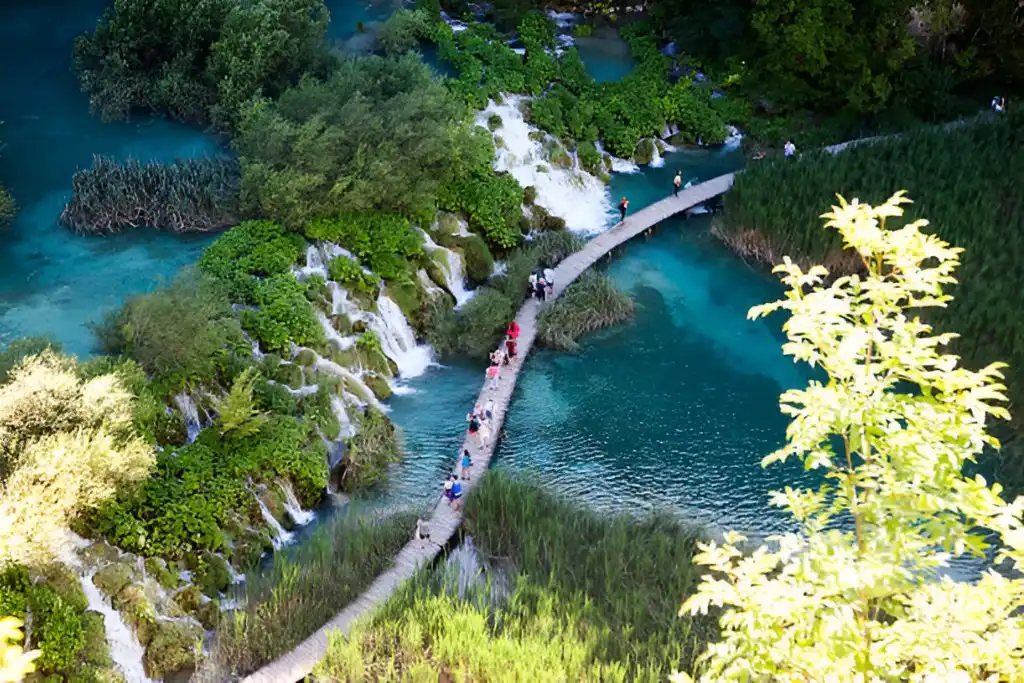
Panoramic Trains
Panoramic trains provide a relaxed way to explore the park, connecting major areas via set routes. This 50-minute ride offers scenic views and a break between walking sections, ideal for visitors with limited mobility or families.
Trains run regularly, and guests can hop on and off to explore different spots. The open-air cars provide unobstructed views, making it easy to take in the beauty of the park.
How to Make the Most of a Day Trip
A well-planned Plitvice Lakes day trip itinerary ensures a fulfilling visit. Start early and explore must-see spots in one day, like Veliki Slap and top Plitvice viewpoints. Ride the electric boat across Kozjak Lake for a unique view and to save time. Even a quick visit to Plitvice Lakes can be memorable with efficient planning. Conclude at one of the scenic spots at Plitvice Lakes to capture the essence of the park.
Top Attractions Within Plitvice Lakes
Veliki Slap waterfall, the tallest in the park, is a must-see with its powerful flow and stunning backdrop. Wooden pathways over crystal-clear waters provide some of the best trails at Plitvice. Iconic viewpoints offer breathtaking panoramas and scenic spots at Plitvice Lakes for perfect moments. Prioritize these highlights to make your visit unforgettable, much like exploring the wonders of the Amazon Rainforest.

Wildlife and Flora of the Park
Plitvice wildlife is diverse, with deer, foxes, and birds commonly seen among lush forest trails. The flora at Plitvice Lakes includes vibrant beech, spruce, and fir trees. The park’s rich biodiversity makes it a haven for nature lovers. The unique balance of fauna and flora contributes to the unmatched ecosystem and biodiversity of Plitvice.
Photography Tips for Capturing the Lakes
Plitvice Lakes offers some of the best photography spots at Plitvice, especially during early morning or late afternoon. Bring a wide-angle lens for expansive shots and a macro lens for close-ups of flora and waterfalls. Use natural frames like trees and pathways for depth. Follow this Plitvice photography guide and tips on how to photograph Plitvice Lakes to capture stunning images.
Visitor Guidelines and Park Rules
When visiting Plitvice Lakes, understanding the park rules and regulations is crucial for an enjoyable experience. The park emphasizes responsible tourism in Croatia, urging all guests to adhere to essential dos and don’ts, such as staying on marked trails and avoiding littering. This not only protects the park’s delicate ecosystem but also ensures visitor safety.
Environmental protection efforts are at the forefront, with visitors encouraged to adopt sustainable practices like carrying reusable water bottles and using eco-friendly products. By following these guidelines, you contribute positively to the preservation of Plitvice’s natural beauty.
Tips for Avoiding Crowds
For those seeking tranquility amidst nature, timing your visit strategically can make all the difference. The best times to visit Plitvice to avoid crowds are early in the morning or late in the afternoon, especially on weekdays. Visiting Plitvice in off-peak hours not only enhances your experience but also allows you to fully appreciate the serene ambiance of the lakes.
Consider planning your visit outside of peak tourist seasons, such as early spring or late fall, when the park is less congested. These quieter times at Plitvice Lakes provide a more intimate connection with the natural surroundings.
What to Pack for Your Visit
Packing smartly can elevate your trip to Plitvice Lakes. Essentials for visiting Plitvice include comfortable walking shoes, a reusable water bottle, and a lightweight backpack. Weather in Croatia can be unpredictable, so bringing weather gear for Plitvice trips, such as a raincoat or windbreaker, is wise.
Sunscreen, hats, and insect repellent are also must-haves for comfort. Don’t forget a camera or smartphone to capture the breathtaking scenery. By preparing a thorough packing list for Plitvice Lakes, you ensure a stress-free and enjoyable visit.
Guided Tours vs. Self-Guided Exploration
Visitors to Plitvice often wonder whether a guided tour or self-guided exploration is the better option. Plitvice guided tours offer the benefit of expert insights into the park’s history, wildlife, and hidden gems. These tours provide a structured and informative experience, perfect for first-time visitors.
On the other hand, self-guided tours at Plitvice offer the freedom to explore at your own pace, creating a personalized adventure. Each approach has its benefits; whether you prefer the detailed narration of a guide or the liberty of solo wandering, Plitvice promises an unforgettable journey.
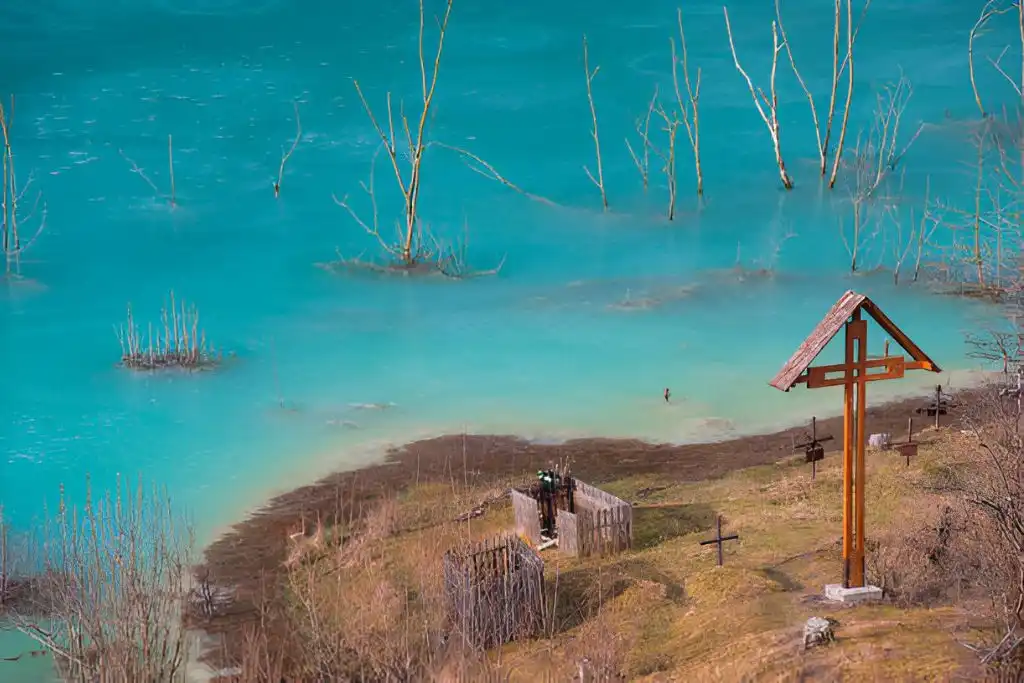
Accessible Features of Plitvice Lakes
Accessibility at national parks is essential to ensure that everyone can enjoy the wonders of nature, and Plitvice Lakes is no exception. The park has made significant strides to cater to visitors with mobility challenges. Wheelchair-accessible trails at Plitvice make it possible for more people to explore certain sections of the park comfortably.
The lower lakes area is particularly known for being more accessible and easier to navigate. These Plitvice accessible areas highlight the park’s commitment to inclusivity, ensuring a welcoming environment for all visitors.
Nearby Attractions and Accommodations
Exploring Plitvice Lakes is only the beginning of what this region has to offer. Nearby attractions include the charming village of Rastoke, famous for its picturesque watermills, and the Barac Caves, ideal for adventure seekers.
For accommodations, options range from budget-friendly hostels to luxurious hotels. Whether you prefer a cozy guesthouse or a high-end resort, there’s a suitable choice for every traveler. These nearby sites and diverse lodging options enhance your visit, making Plitvice a hub for extended exploration and relaxation.
Dining Options Around Plitvice Lakes
Exploring dining options at Plitvice Lakes enhances your visit with local flavors. Restaurants near Plitvice offer everything from hearty Croatian dishes at Lička Kuća to varied international cuisine. Dining at Plitvice National Park includes charming bistros where you can grab a quick bite after a day on the trails. For more convenience, many hotels near Plitvice Lakes feature their own restaurants, blending comfort with regional tastes.
If you prefer dining outdoors, the picnic spots at Plitvice are perfect for enjoying a packed meal surrounded by stunning natural views. Accommodation in the Plitvice area often provides easy access to these scenic spots. This combination of dining experiences ensures that every visitor finds a perfect match for their tastes and itinerary.
Safety Tips for Exploring the Park
Ensuring safety at Plitvice Lakes starts with following essential Plitvice trail safety tips. Always stay on marked trails and wear non-slip footwear, as paths can become slippery, especially after rain. It’s also important to monitor the weather, which can change rapidly and impact trail conditions.
Visitors should carry a first-aid kit for minor scrapes and insect bites and keep emergency contacts for Plitvice visitors on hand, which can be found at the park’s entrance or visitor center. Staying hydrated and pacing yourself not only enhances your enjoyment but also helps maintain safety during your exploration.
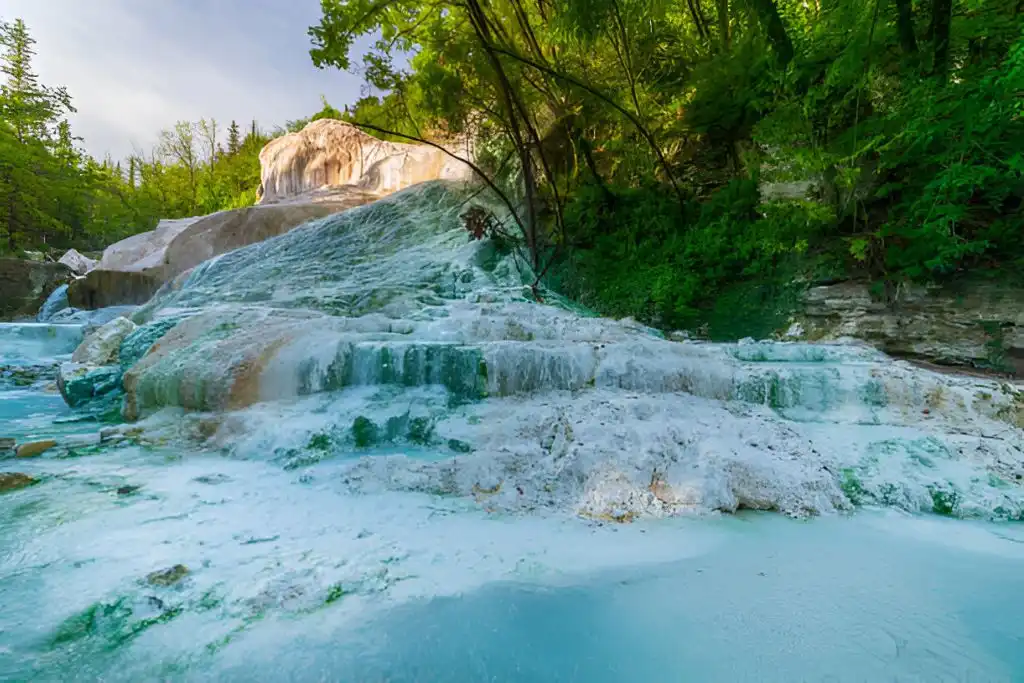
Fun Facts About Plitvice Lakes
Plitvice Lakes is rich with interesting facts that make it unique. It is the oldest and largest national park in Croatia and is recognized as a UNESCO World Heritage site. One of the most fascinating facts about Plitvice is its tufa sedimentation process, which continues to shape the lakes and waterfalls, creating an ever-changing landscape.
Fun trivia on Plitvice Lakes also includes its diverse wildlife, with rare species such as the Eurasian lynx and brown bear calling the park home. Lesser-known Plitvice facts include the optical illusions created by the park’s crystal-clear waters, where rocks can appear deceptively shallow. This pristine quality is maintained through strict conservation efforts to protect its natural beauty.
Frequently Ask Questions
What is the best time of year to visit Plitvice Lakes?
The best time to visit Plitvice Lakes is during late spring (May-June) or early fall (September-October) for ideal weather and fewer crowds.
How much does it cost to visit Plitvice Lakes National Park?
Ticket prices vary by season, ranging from €10 to €40, with higher rates in summer. Discounts apply for students, children, and groups.
What are the best trails and routes to explore in Plitvice Lakes?
The park offers multiple trails (A-H) of varying lengths; Route C and Route H are popular for showcasing the best views of the lakes and waterfalls.
Are there accommodations near Plitvice Lakes National Park?
Yes, there are various options, including hotels, guesthouses, and lodges, providing easy access to the park.
What should I pack for a visit to Plitvice Lakes?
Pack comfortable clothing, sturdy shoes, a water bottle, sunscreen, and a raincoat for unpredictable weather.
Is it safe to swim in Plitvice Lakes, and what are the safety guidelines?
Swimming is not allowed in the lakes to protect their ecosystem. Visitors should follow all posted safety signs and trail guidelines.

